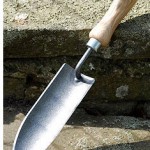Diagnose the Problem
First, you have to make sure you actually have lawn grubs. If you have moles, it’s pretty much a guarantee you have grubs. If you don’t have moles, but patches of your lawn are dying and easily pulled up (thanks to severely damaged roots) that’s a definite sign too. To make sure, dig into your soil a little. If you see small white creatures that look like larvae, you have grubs.
Treat at the Right Time
You may want to treat lawn grubs immediately, but if you go after them too early in the spring, you’ll spend a lot of time and money without killing many grubs. Around June, lawn grubs hit the stage where they go to town on your lawn, but also where they’re most susceptible to insecticide. That’s the time to treat your lawn.
Go Deep
Lawn grubs can be tenacious little creatures. To really kill them, you have to make sure the insecticide gets down to where they’re hiding out. If you treat your lawn and aerate it, the poison will penetrate down to the levels it needs to. Wearing spike shoes will do the trick too (although you should avoid the spike shoes if you already have compacted soil).
You may have to repeat your insecticide application, but once you’ve taken care of the lawn grub problem, you’ll be both grub- and mole-free.
